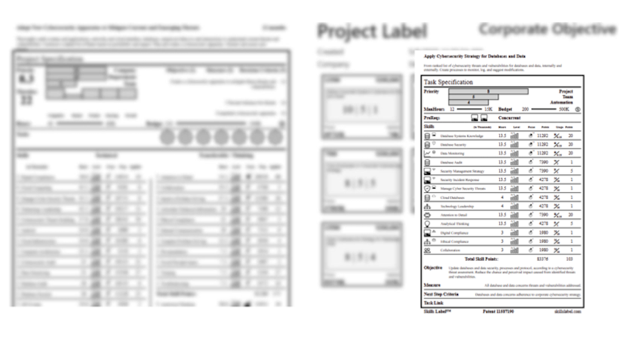Working in the medium of skills, I immediately recognized the value of using them to define and quantify learning and jobs. I designed and built Learning, Course and Job Labels to apply our company tagline:
Map Learning in Skills. Map Jobs in Skill. Combine to Create Pathways.
The spark for a Project Label is to predict the chance of a job existing after Job Futures mature. For the UI, I built an interactive dashboard to stack Task Labels. There is currently a publicly available Catalog of Task Labels. My intent is to make the Project Label responsive through conception, coordination, and implementation of the project if it is a “GO”.
Projects are core to a business. Companies such as 3M, Adobe, Caterpillar, Ford, Gartner, GM, Google, IBM, Intel, J&J, KPMG, Meta, Microsoft, Nike, Northwestern, Paychex, and Pfizer ask new candidates for the skill of Project Management regardless of the job area.
In our catalog of 350 actual Job Labels, 22 percent of the jobs (77) require the skill of Project Management, not to mention Project Coordination (31) and the cousin Process Management (13).
This does not represent the Project Manager "lifers" who are certified and working in a PMO office. I simply have not covered this job area.
With AI and automation, packaging work into projects should persist. Many of the jobs in the Job Label Catalog reference Project Management and projects in cutting edge AI, machine learning, and automation. As teams grow smaller or silo, you might ask an engineer or developer to manage a project and use AI agents to help coordinate the project.
Project Labels referencing skill definitions and Skill Points are an effective way to not only understand internal and external job sourcing needs but also measure automation and AI.
For the latter, with Skill Points, one analogy might be thinking how we continue to measure with “horsepower” for the rate at which work is done.
